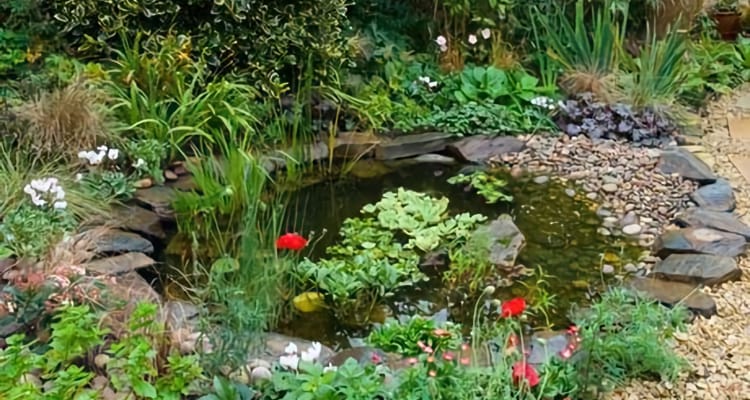The importance of ponds to our native wildlife can’t be underestimated.
Ponds provide a unique wildlife habitat for frogs, toads, newts and many insects. Caddis flies, damselflies, dragonflies, mayflies, pond skaters, snails and water beetles all breed in water and it’s thought frogs are now more common in garden ponds than in the countryside.
Although there are over 450,000 natural ponds in the UK’s countryside but they’re becoming more and more threatened by climate change, pollution and re-development. We can all do our bit by creating our own wildlife pond to increase the habitat available for our wildlife. It doesn’t have to be a huge pond – every little one helps! According to Alan Titchmarsh
a garden pond is a joy and you can make one in a weekend.
If Alan says so…..!
Gardens of all sizes can accommodate a water feature – whether you actually dig a pond or get creative and use something like an old bathtub.
So, when is the best time to build your pond? Basically, you can start at any time of the year, but it does take some planning and it will establish much quicker if you start in autumn or late winter.
Make sure you include lots of natural edges with shallow shelves as this is where amphibians, dragonflies and water beetles we will be at their happiest. Plant grasses at the edge and allow them to trail over the edge of the pond.
Unless you intend to keep fish, a shallow pond is ideal. It doesn’t need to be more than a foot deep which means you’ll be able to see the bottom and the water will remain oxygenated.
By putting your pond in a warm, sunny area you’ll encourage tadpoles and dragonflies and they’ll thrive in these conditions.
Step 1 – Dig it!
- Mark out the pond shape you’re looking for. You can use either a rope or hosepipe – anything you have to hand that will form the approximate shape. Don’t be too fussy about perfect circles – wiggly edges make a wildlife pond more attractive and authentic.
- Start to dig out the grass / turf making sure you keep some back to secure the liner around the edges of your new pond. Be careful not to put the grass / turf directly into the water as the nutrients they contain will pollute the water.
- Don’t dig too deep – remember shallow is best for a wildlife pond. The ideal pond should have lots of shallow water with gently sloping edges. Anything deeper than a foot will give you very steep sides which is what you want to avoid.
- When you’ve finished digging, check that it’s level. You can do this by placing a long piece of wood across the entire pond and place a spirit level across the middle of it. Remove any extra grass / turf from the highest side as necessary to make it level.
- Remove any large stones or rocks from the bottom so that your liner won’t get punctured.
- Add a layer of builder’s sand to the base of your pond. Sand is preferable because it’s sterile and won’t harbour any undesirable seeds or microbes.
- Dig a trench around the edge of your pond so that you can overhang the liner into it and weigh it down with large ornamental rocks. If you have any excess liner showing, simply cut it away.

Step 2 – install your pond liner
- Your liner should be both durable and flexible and you can find one made of butyl rubber relatively cheaply. You can either buy a flexible liner sheet or a preformed one depending on your preference.
- Lay the liner in the pond – you may find it easier to step into the pond (without your shoes) to smooth it into place.
- Don’t be tempted to stretch the liner as it may tear.
Pond Liners
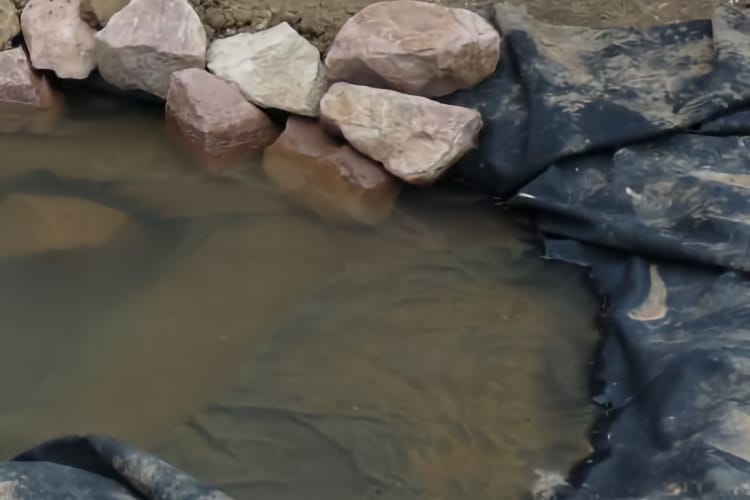


Step 3 – Fill your pond – slowly
- To create the perfect wildlife pond, it’s important to have clean water.
- Rainwater is ideal as tap water often contains phosphorous and nitrogen and these will work against aquatic plants and encourage algae and duckweed – which is not what you want.
- If you want to create your pond in times of drought (or wishfully thinking during a long hot British summer…) it’s a good idea to prepare a few months before and set up water butts to collect water from the gutter downpipes of your house.As well as using it to fill your pond initially, it’ll also be handy for topping it up during warm weather.
- Filling your pond may take longer than you think and to make sure your sand doesn’t disperse from the bottom, gently pour your water in. If you’re using a hose, rest the nozzle on a plastic bag – this will absorb some of the force from the hose.
- As the pond fills with water, your liner will stretch. Fill the trench around the edge with soil and place your stones, rocks or flagstones over the edges of the exposed liner.
- If your liner has any wrinkles use your hands and feet to push any wrinkles in the pond liner to the side walls. The weight of the water will prevent the wrinkles from returning.
- Leave your pond for a couple of weeks before you add any plants by which time any nutrients from the water will have evaporated.
- Now’s the time to think about what plants you want.
Step 4 – Add some plants
- The best time to plant is mid spring or early summer as the water will have warmed up a little.
- After a couple of weeks, you can start to introduce plants into your pond.
- Carefully select native aquatic plants, such as the Purple Loosestrife or Meadowsweet, that will encourage native species – don’t forget the butterflies and the bees.
- If space allows, you could also add some water lilies into the pond itself.
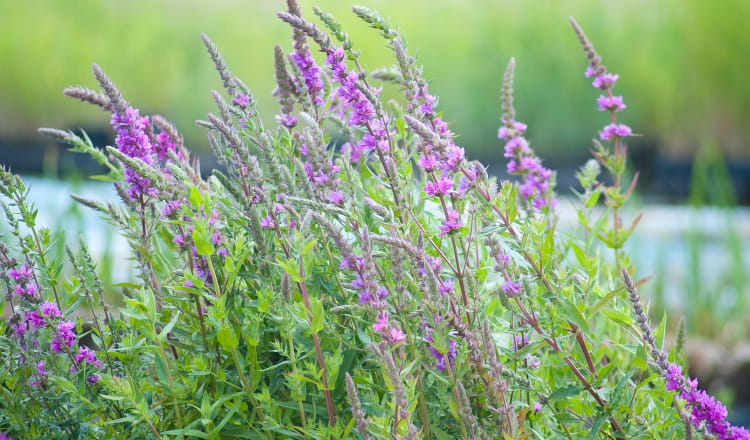
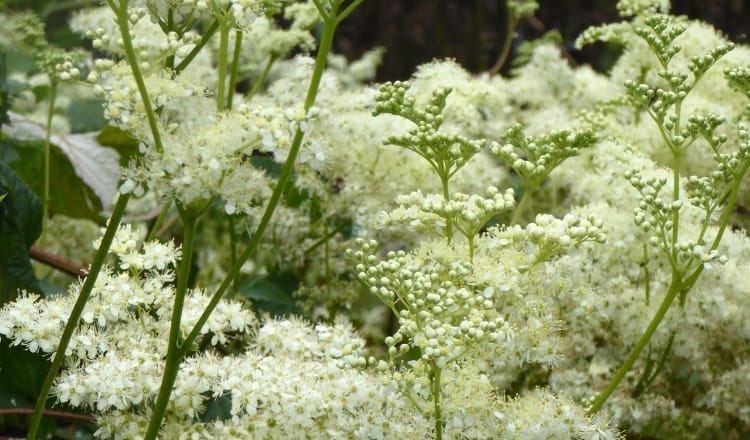
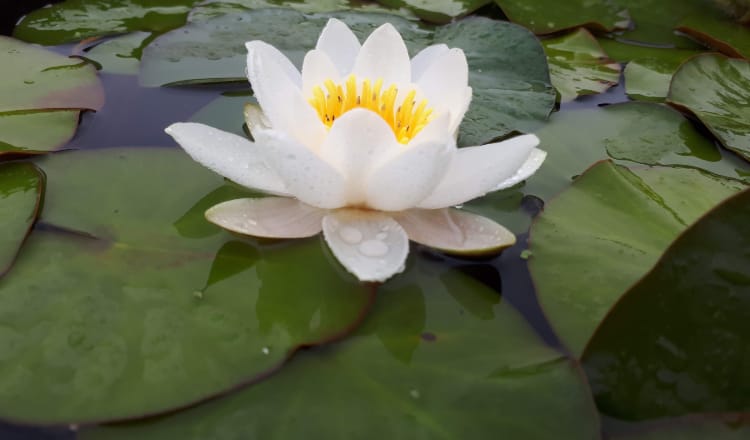
Step 5 – watch and enjoy
- Keep an eye on your pond and monitor what comes to visit and/or stay.
- Add plants to the edges of the pond to encourage wildlife in.
- Add extra planks of wood and stones to help any wildlife that might fall in.
- Keep a look out for any build up or dead leaves or any other organic matter and remove these.
So there you have it. Sit back, relax and enjoy your wildlife pond.
